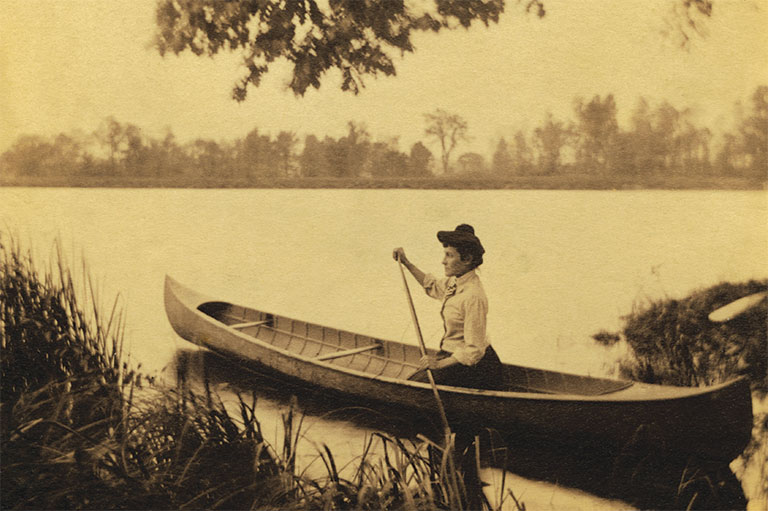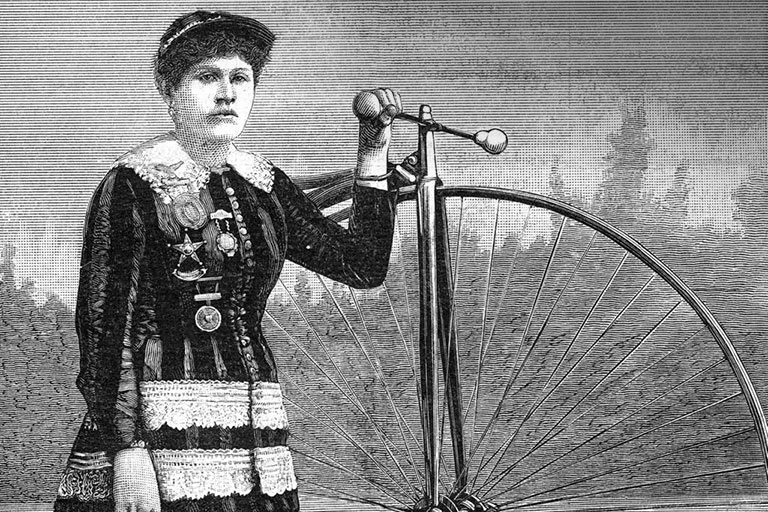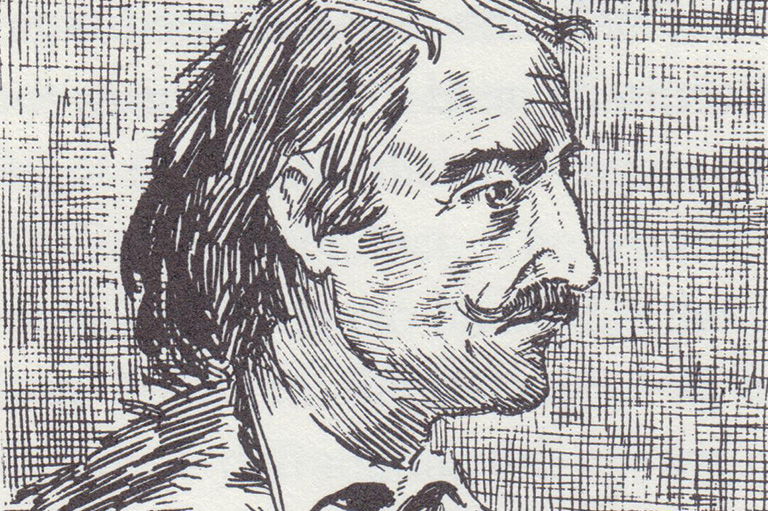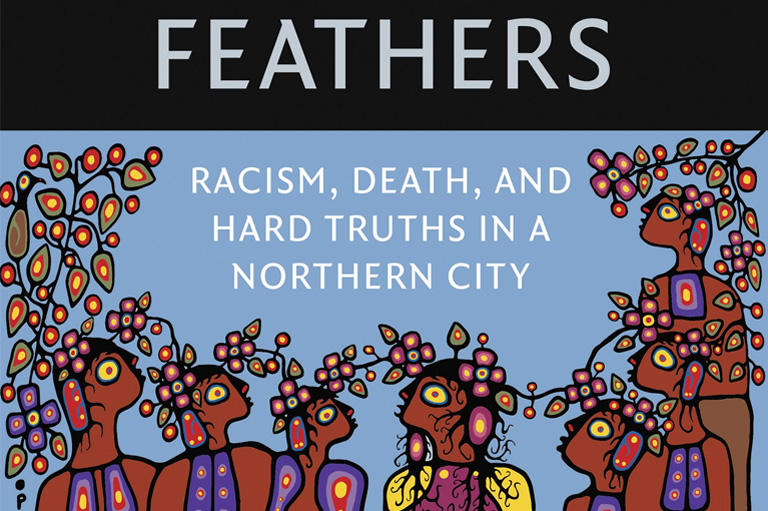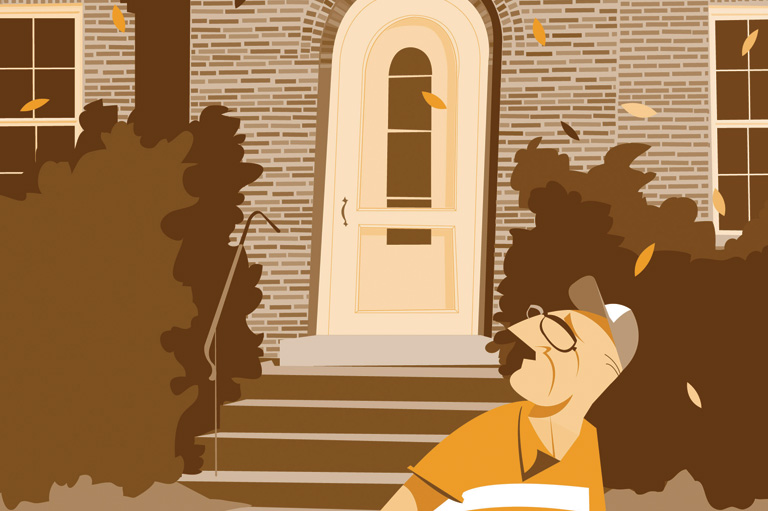Discover a wealth of interesting, entertaining and informative stories in each issue, delivered to you six times per year.
The Writings of David Thompson, Volume 2
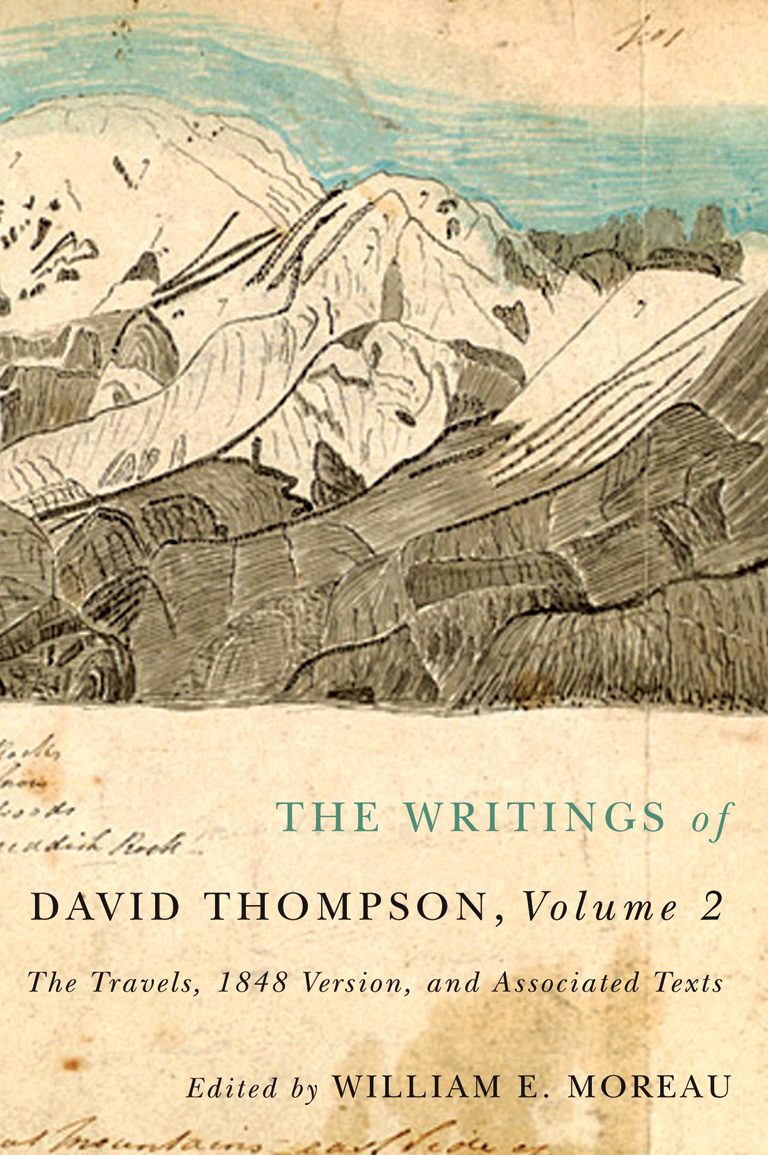
Many of Thompson’s experiences are recorded in his Travels, written decades after his journeys, and which William E. Moreau calls “the grand narrative of his life in the fur trade.” Moreau is the editor of a three-volume collection of Thompson’s writings being published by The Champlain Society and McGill-Queen’s University Press.
The Writings of David Thompson, Volume 2: The Travels, 1848 Version, and Associated Texts includes the trader’s adventures in the Northwest between 1807 and 1812. During that period Thompson worked to extend the fur trade across the Continental Divide, and in 1811 he reached the west coast via the Columbia River.
David Thompson arrived from Britain on the shores of Hudson Bay in 1784 at the age of fourteen. He spent much of the next three decades travelling the great expanses of Canada’s West as a trader, surveyor, and map-maker for the Hudson’s Bay Company and the North West Company, before retiring from the fur trade in 1812.
Thompson wrote about the peoples, landscapes, and wildlife he encountered in his journeys. The following excerpt includes a conversation with an Aboriginal elder about a remarkable fur-bearing creature. It reflects Moreau’s transcription of the original text.
Furr Regions. Beaver.
I have already noticed that on the discovery of Canada the Beaver possessed the whole country eastward of the great plains, which is the great table land eastward of the Rocky Mountains; from the edge of these plains, to the coast of Labrador, thence round to Hudsons Bay and northward to McKenzies River, it required this immense region of country to furnish the annual sales of many thousands of their skins. It is a work worthwhile for some person curious in these matters to examine the sales, but this properly belongs to some intelligent gentleman of New York, who will not disdain to examine how many millions of these animals, have been destroyed for the sake of their furrs. This animal once so very numerous, is now being eradicated from this continent.
On the discovery of Canada, the Red Man with hard labor procured them for food and clothing, to cut down the dams and lay the ponds dry, was beyond his power, all he could generally do, was with a pointed stake, the end hardened in the fire, to dig through the houses of the young beavers, after having closed the door of the house with stakes which he broke and thus they became his prey, but in winter he had to make a fire to effect his purpose, but when they became possessed of iron tools, the dams were cut down, the water of the ponds drained off, their houses cut through, and almost every one of them taken. The combined works of these animals are not credible; I shall therefore only relate one as a sample. In autumn (some full fifty years ago) [in 1797] in company with some Indians I was exploring the country, at the Nut Hill, the Indians told me we would have to pass over a long beaver dam, over which I expected to lead my horse with great care, we came to it, grown over with grass, and apparently of solid ground, two Horses could pass abreast, it was about one mile in length, it’s lower side showed a descent of about seven feet, and the Pond formed by this dam was a fine sheet of water of the area of one and a half square miles; when about half way over the dam, a fine afternoon, I could not help stopping: and admiring the works of the Beaver, on my right hand was a close cluster of Beaver Houses I enquired of the Indian (about seventy years of age, or more) how many there were, “when I was a young man there were a good many, but now they number fifty two, some are of young beavers;” “You must kill a good number of them.” “We do not; when we broke open their houses, they found shelter in the other houses, we speared a few when they came back to enter them, which did not pay us for our time and labor.” “Did you ever see so many houses together before?”
“Never, I know of some large Ponds, with plenty of Aspin Trees, where there are thirty, or forty, but not close together;” As I had very often conversed with the old Indians on the ancient state of the Beaver, and this was a favourable occasion, we were sitting on a dam of the combined efforts of their industry; their extensive pond, a village of them lay before us; I wished to question the old man, he was quietly smoking his pipe, his capacious eye was master of all around him: I began the conversation by enquiring his opinion of the ancient state of the Beaver; he coolly replied “we have our traditions from old times, what they were, but you white men laugh at us, treat us with contempt;”
As yet, no beaver has ever been found killed by the fall of a tree.
“I have never done so;” “I know it.” “How came the Beaver to be so utterly different from all other animals, he makes dams far stronger than any we can make; did you ever know a beaver dam carried away.” “Never, the Snows may melt, the rains may pour down, but the dam of the beaver stands firm; our fishing dams are carried away, but never the dam of the beaver.” “But how is it, that the Beaver which is a mere animal should be wiser than we are to construct dams.”
“They are not animals like the others. This you ought to know, and must know, in many things they are wiser than we are, but they have no power, they are given to us for food and clothing;” But I have conversed with many old Indians going back upwards of 100 years, and more, they all say, the present state of the Beaver is not his ancient state, the situation and construction of their houses show them to be wise, his house is never built with sand, or loose stones, but always with strong earth, mixed with pieces of wood, and if small flat stones can be had, such as he can carry, he places them in the earth of his house; I have told you he is wise without strength to defend himself, or to protect his works.
“What was his ancient state.”
“Our belief may be laughed at, but is, that in some manner they were an ancient people, and dwelled on the dry land, that the great spirit became angry with them, but we do not know for why; and ordered We sauk e jauk to drive them off the dry land into the water, and there let them be wise without strength;”
“Is it true that the Male is alway faithful to the Female;” “So far as we know it is true, when a full year old they choose their mates, and if undisturbed pass their lives together, this from ancient custom.” In autumn the Beaver carefully examines his dam, and where necessary repairs it, it is always composed of strong earth inter laced with many pieces of wood, mostly with the bark off, all placed in oblique position to the dam. When the dams are being cut through, they show great anxiety to repair it, one bringing some earth, another a round piece of wood, and thus several are killed by the hunters.
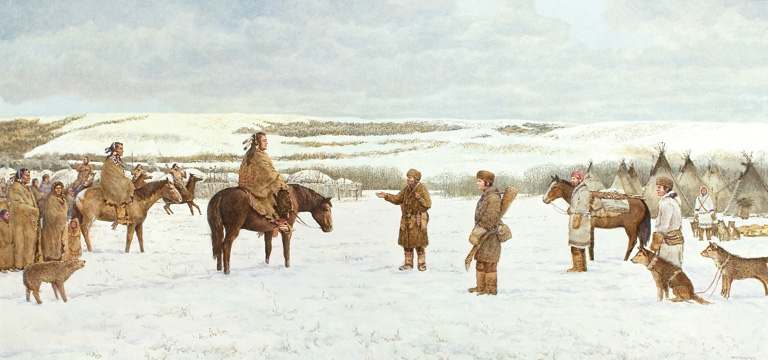
Their houses, if low cabins of earth can be so called, are constructed with great care to resist the rigours of winter, as their principal food is the bark of the Aspin Tree, they cut down with their sharp teeth, like small chissels, a number of these trees, they knaw them round, about a foot above the root, when it appears they have cut the tree nearly through, they frequently retire to a small distance, and watch the motions of the tree to know which way it will fall, and so accurate is their judgement, that, as yet, no beaver has ever been found killed by the fall of a tree; at the entrance to his house is placed pieces closely set of the young aspin tree of about four to six feet in length, and from two to four inches diameter, with the green bark on them: the Indians say; that the most provident have not more than a supply for half the winter, if their appetites were of the same nature as in summer, but the Indians consider that when the rigours of winter come on, they become something in a torpid state; and only occasionally awake to enjoy the green bark of the Aspin, placed at their door, and he thus preserves the greater part of his stock to the spring, when he becomes active; the Beaver House is like the arch of a low country oven, the bottom rises about eighteen inches above the level of the water in a gentle slope, here is a bed of fine grass and soft chips of Aspin wood; on which the Beavers repose, close together; the arch throughout is well formed and nearly corresponds to the outer surface of twelve to eighteen inches in thickness. The interior arch is low, and seldom allows a person to sit upright, perhaps twenty six inches may be the height of the arch, how long the Beaver might have contended with Man and the Wolverene, his only other enemy, who can tell; ... From old times the Indian had been accustomed to notice the paths of the beaver, and make light traps of wood in their paths, in which the beaver were caught, but in a bare sufficiency for food and clothing. but upon the manufacture of steel traps, with springs, these latter took the place of the former, they were placed in the water, where the Beaver landed, about three inches under the water, so that the beaver in passing over it might press upon the palate, and the springs inclose him. Many were this way caught, but it was soon noticed that they forsook their old paths and became very shy....
Themes associated with this article
You might also like...

Our online store carries a variety of popular gifts for the history lover or Canadiana enthusiast in your life, including silk ties, dress socks, warm mitts and more!


